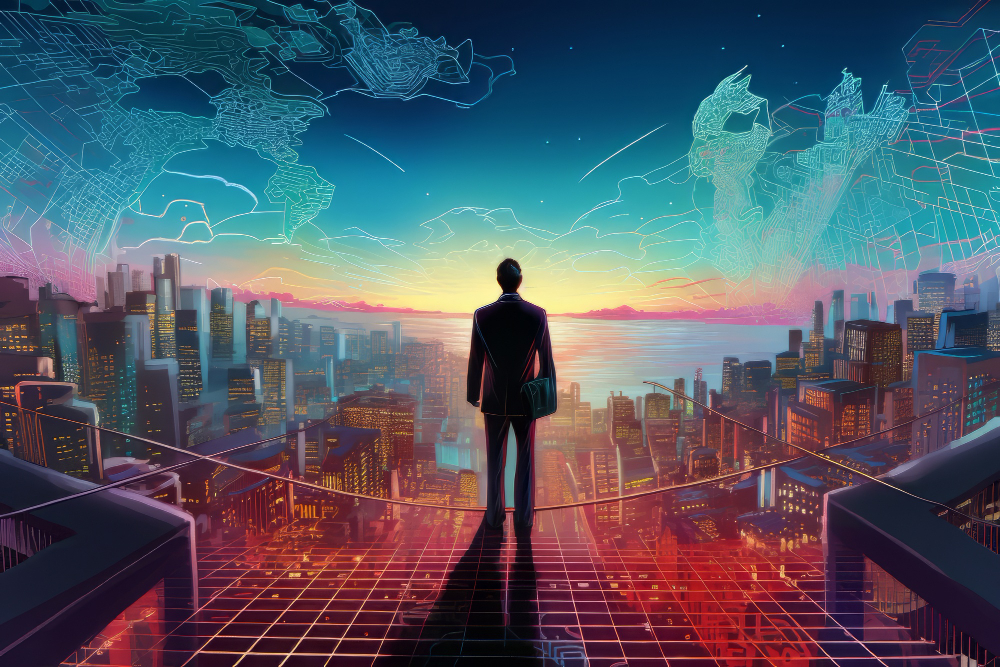In our rapidly changing digital environment, we are now closer than ever to bridging the gap between the virtual and physical worlds. Technological advancements have made it possible for us to integrate these two realms seamlessly and businesses are taking full advantage of this. From augmented reality experiences that take us on adventures in other dimensions to smart devices that make our lives easier, we’re seeing more and more digital and physical integrations.
Welcome to a world where pixels and atoms work together like never before. Opportunities for companies seem endless right now. In this article, we will explore how companies are embracing these merging realms in order to enhance customer experiences, drive sales and revolutionize industries.
The Importance of Bridging the Digital and Physical World
This integration is becoming a crucial aspect of almost every industry out there. People expect seamless online services that blend into their offline world. Businesses must meet people’s expectations if they want to stay ahead of their competition.
By using digital technologies, businesses can connect with people on a deeper level. This allows them to personalize their products or services towards specific needs. When consumers perceive that something is tailor-made for them, it significantly piques their interest. Bridging the two worlds together simplifies the process of gathering data and insights from customers.
Despite all of these benefits however, there are still challenges that come with integrating both realities.
Challenges in Bridging the Digital and Physical World
One main challenge is fusioniong different technologies with one another. New platforms and technologies are constantly being created at an alarming rate, which makes it very difficult for businesses to keep up. They need to ensure their overall performance doesn’t suffer while trying to keep everything together seamlessly.
Another challenge includes having a holistic approach towards customer experience. This requires the analysis of every single touchpoint in a customer’s journey from start to finish to bridge the gap properly. These different areas must transition smoothly within each other to prevent any loss of information and maintain the customer’s interest.
Lastly, security and privacy concerns can also be a challenge in bridging the gap. As businesses continue to collect more and more data on customers, they must ensure that it stays safe. Customers need to know that any piece of information they share will stay secure.
Strategies for Bridging the Digital and Physical World
In order to bridge these two realities successfully, companies have come up with different strategies already. One of these strategies includes using augmented reality (AR) or virtual reality (VR) experiences to enhance customer engagement. By creating interactive experiences, companies can take their customers on adventures that are otherwise impossible.
Another plan is to merge smart devices and IoT (Internet of Things) technology into physical areas. A business can connect devices and objects to the internet in order to pull in real-time data. This will allow them to optimise their operations and offer personalised experiences. For example, if a retail store equips its fitting rooms with smart technology, it can provide customers with suggestions for complementary items, based on their preferences and purchase history.
Businesses can also use data analytics and AI (Artificial Intelligence) in order to better understand customer behavior patterns. By thoroughly analyzing large sets of data, businesses can uncover valuable insights that might have otherwise gone unnoticed. These insights could then be used to shape marketing plans for a more targeted approach.
Real-Life Examples of Success
Many companies have already been able to successfully bridge the digital and physical world. They’ve revolutionized industries by setting new standards for customer experience. One example is Nike, who has embraced technology as a way to create an effortless and personalized shopping venture. Customers are now able to access exclusive content through their NikePlus app such as recommendations for products they might like or even reserve products so they’re ready for pickup in-store. Nike has also integrated AR technology into their app so customers can virtually try on shoes before purchasing them.
Starbucks has also implemented new methods using digital technology that enhance their in-store experience while cutting down wait times. Through their mobile app, customers can place orders and pay ahead of time so it’s ready when they arrive at the store.
Tools That Can Help Bridge the Digital & Physical Gap
There are many different tools available that can help businesses bridge this gap between the digital and physical worlds. An example would be beacon technology which uses Bluetooth Low Energy (BLE) signals to communicate directly with smartphones or any other compatible device out there. Beacons can be placed inside retail stores or other physical locations so they send personalized notifications or offers right to a specific customer.
RFID (Radio Frequency Identification) technology could also be used by companies. It’s a wireless method that scans through radio waves to identify and track objects. If placed on items, businesses can track inventory and let customers know the information in real-time. For instance, a clothing store with this technology would be able to show product information on digital screens while also displaying whether or not it is in stock.
Looking Ahead
As technology continues to advance at its rapid pace, there will certainly be plenty of possibilities for the future when it comes to bridging the gap between these two worlds. Currently emerging technologies such as 5G, blockchain, and edge computing, have all shown terrific promise so far. They have been known to revolutionize industries which has helped fully integrate the virtual and physical realms like never before.
If we were able to see into the future right now we would only find more personalized and immersive experiences that blend both digital and physical worlds together seamlessly. From virtual try-on experiences in fashion to interactive product displays in retail shops – businesses are going to push new limits when it comes to engaging their target audience.
Another case study is Alibaba, the Chinese e-commerce giant. Their efforts in bridging the digital and physical world are known as “New Retail” which combines both online and offline shopping experiences. One example of this retail concept can be found through their Hema supermarkets. Customers have the ability to shop for groceries both in-store and online with home delivery being an option. Additionally, each store offers a range of digital features like scanning products for information and receiving personalized recommendations.
How to Measure Success in Digital-Physical Integration
While it may be difficult to measure success when combining two different worlds, there are various metrics that businesses can track to gauge effectiveness. For instance, customer satisfaction and engagement can provide great insights when analyzed correctly. Businesses will be able to better understand overall satisfaction levels which will ultimately help them improve.
Sales and revenue should always be monitored regardless of what you’re trying to accomplish. By tracking these numbers across different channels, businesses will be able to determine the impact between their efforts on one side compared to the other.
Conclusion
The possibilities within blending pixels with atoms are truly endless; businesses just need to find a way there. From augmented reality experiences to smart devices and IoT technology, companies can achieve anything if they set their mind on it.
Although we cannot predict future technologies, we know they’re arriving sooner rather than later. With this knowledge, we anticipate the online and offline realms to blend together at an even faster rate.
Businesses looking to stay at the forefront of innovation must embrace this new era or risk being left behind with outdated practices. So let us all come together on this journey into merging two separate worlds and see where it might take us!


